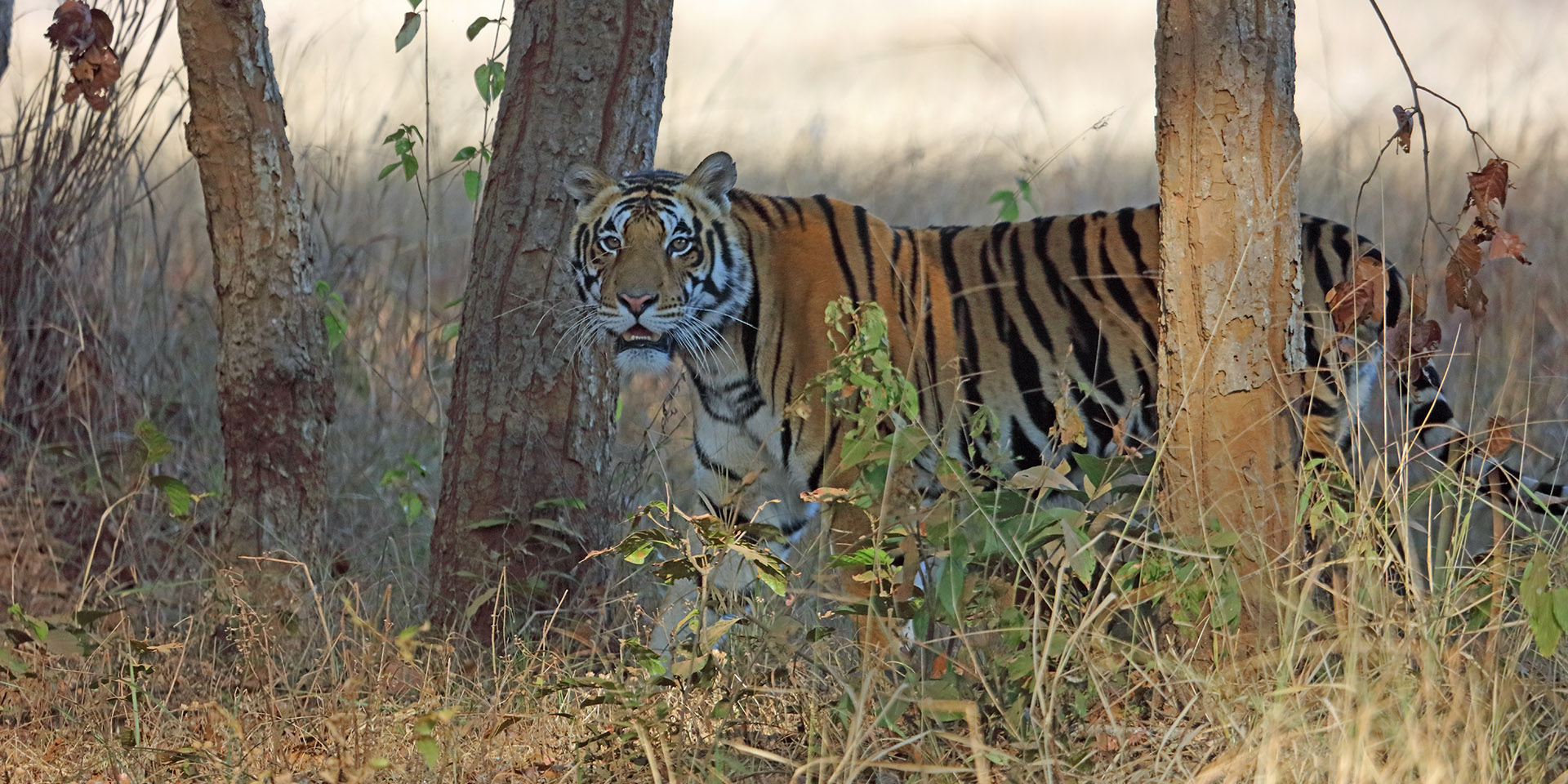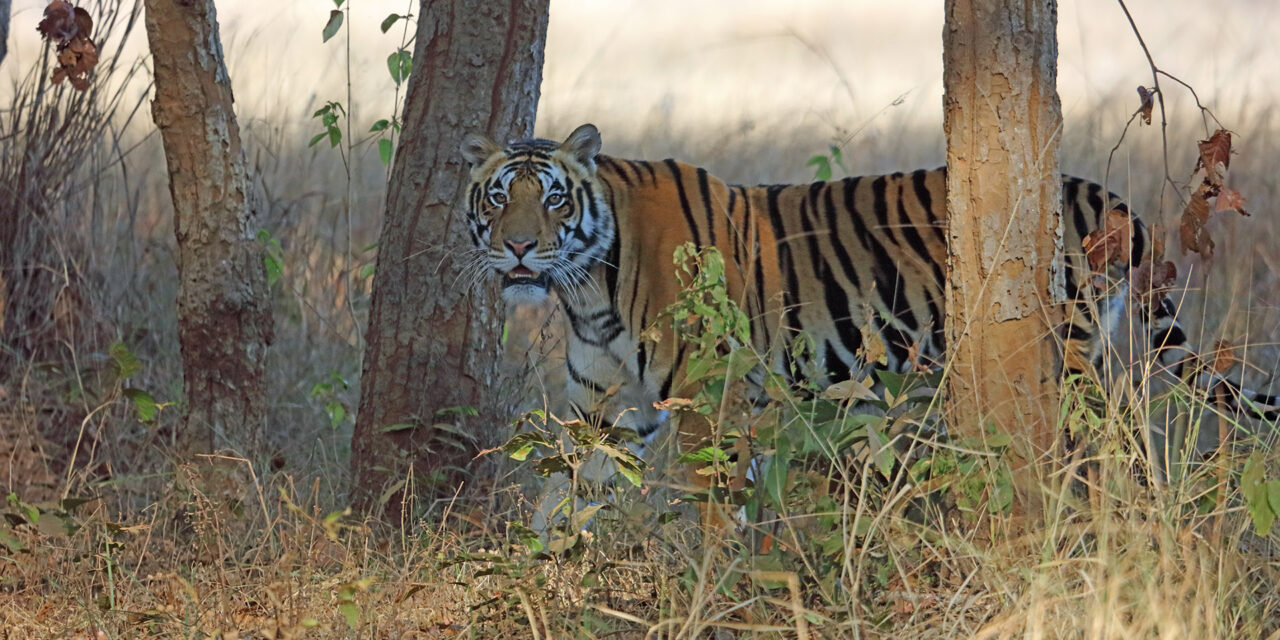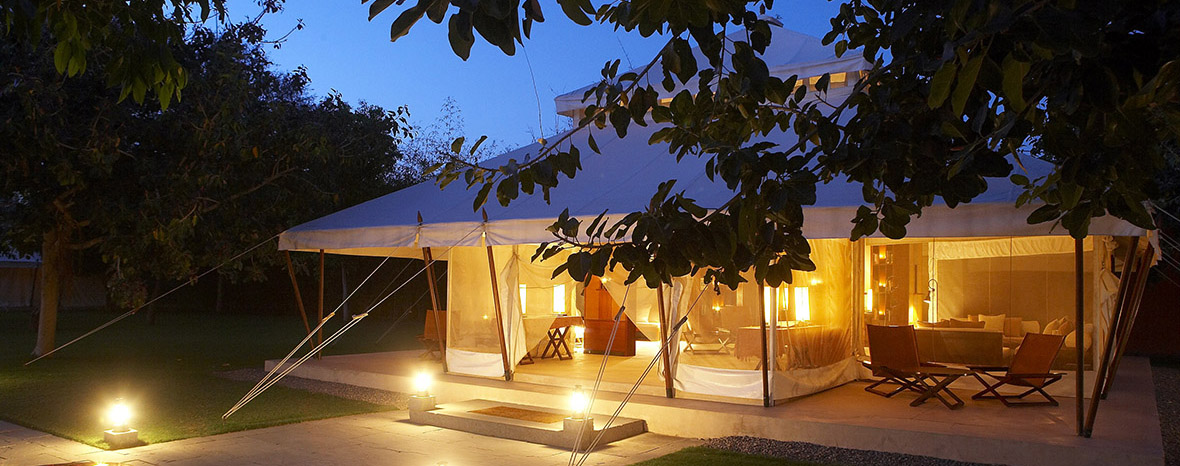There are tigers for Shere Khan and sloth bears for Baloo. It’s thought that the magic forests of the Kanha Tiger Reserve were the inspiration for Rudyard Kipling’s Jungle Book; here, the leopard shares space with the wolf and the hyena with the honey badger. While the tourists run off to Ranthambore and Bandhavgarh National park, the tigers of Kanha are thriving, and travelers will find the conservation efforts there a roaring success.
Wildlife Safari
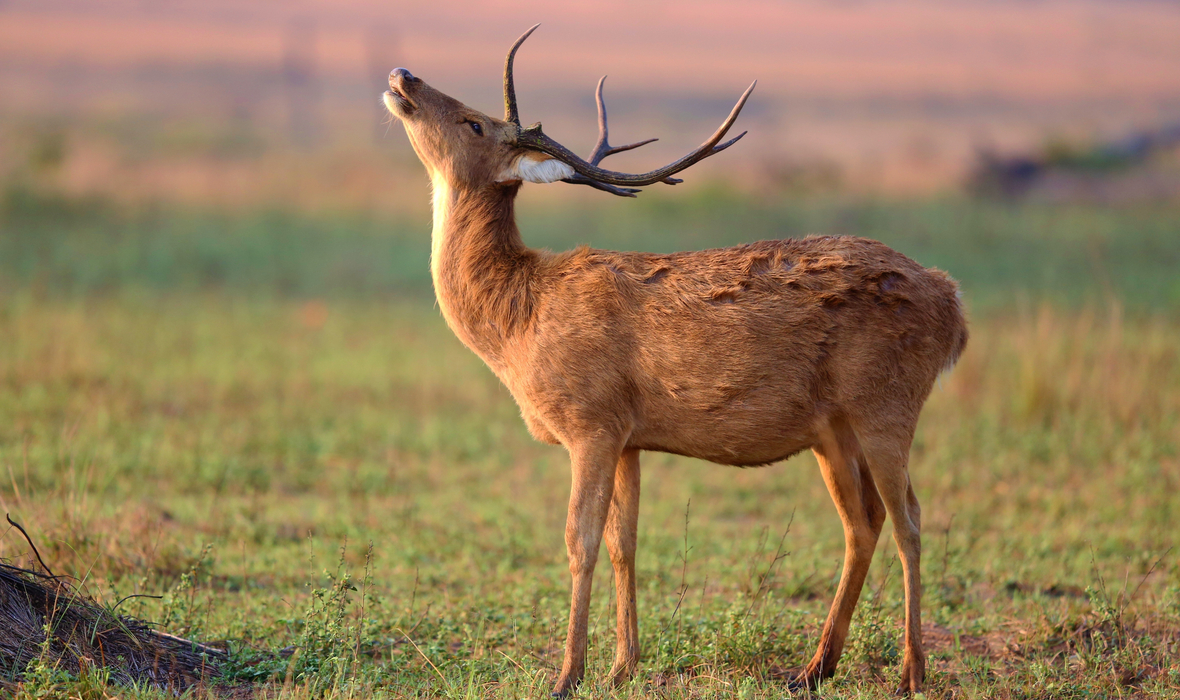
ABOVE: Kahna is the only place left on earth where one can see the Barasingha deer in the wild.
Travelers can traverse fiction, adventure, and the spirit of the Indian jungle on a wildlife safari to Kipling’s “Seonee,” home of the largest National Park in the central Indian state of Madhya Pradesh.
With regular views of the recovering Barasingha deer and the hearty gaur, the park is rich in wildlife. Stretching over 360 square miles, the sanctuary houses India’s most famous tiger reserves and over 300 species of migratory birds.
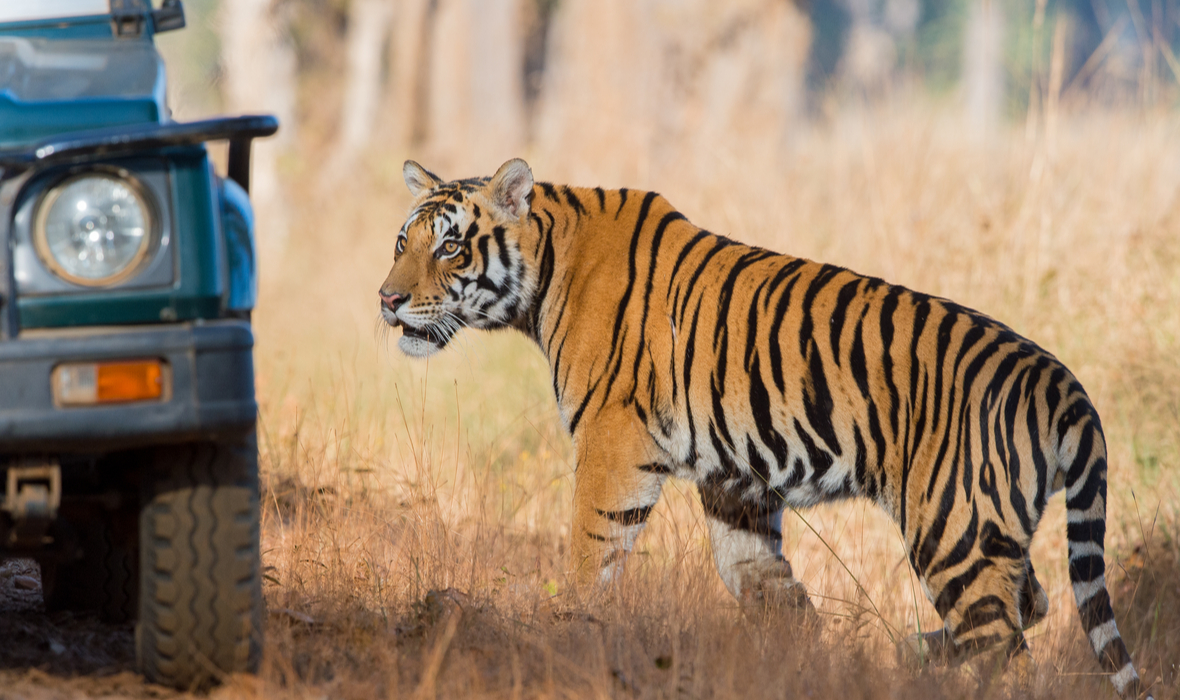
ABOVE: Wild tiger by modified Tata 4×4 vehicle in Kanha.
Adventurous travelers can venture into the jungles of Kanha on game drives, in specially modified Tata open 4×4 vehicles, offered twice daily. Skilled drivers keep pace with leopards and tigers, and travelers can get an up-close view of their feline strength, agility, and speed.
Nature lovers can even embark on walking safaris guided by local naturalist expedition leaders in sanctuaries for a closer communion with nature. Naturalists share the secrets of the park and introduce travelers to hidden pathways and nature trails in the buffer zone of the park.
The likelihood of spotting certain species can vary with season. The mighty guar, for instance, is most likely seen as winter ends.
Stay at the Taj Banjaar Tola
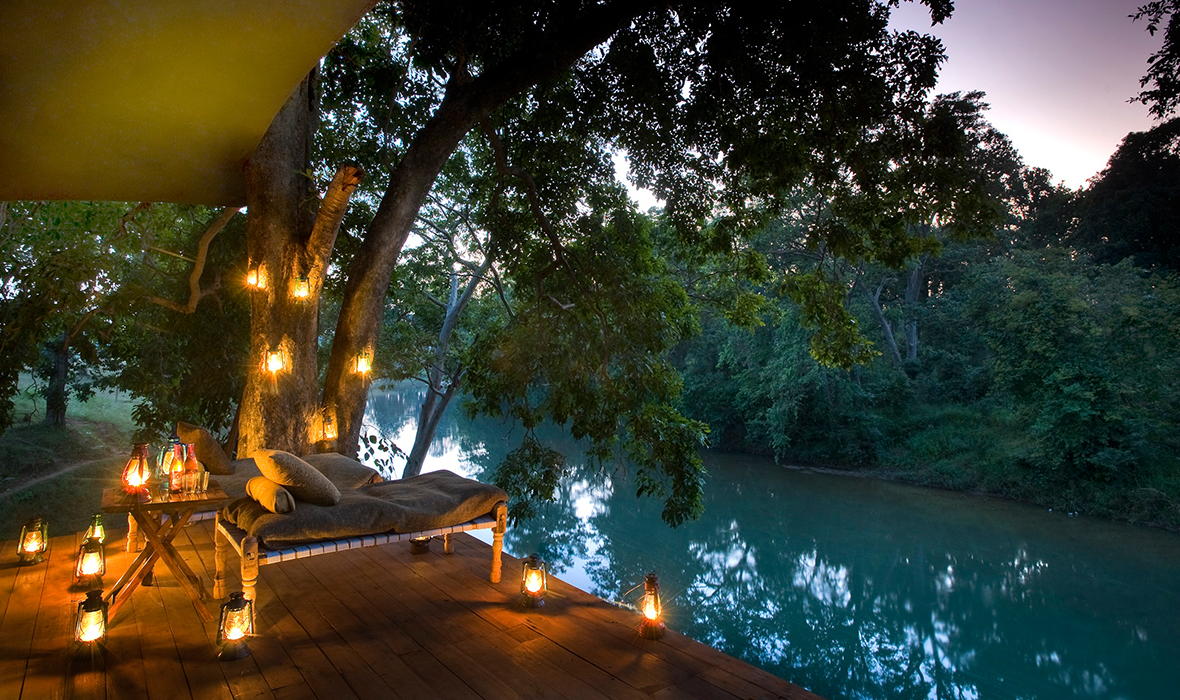
ABOVE: Tent deck at the Taj Banjaar Tola.
Swinging on vines, the Jungle Book’s Mowgli moved between the different worlds. After braving full days of wild flora and fauna, travelers can move between the wild and colonial luxury to recuperate in palatial havelis.
Two intimate camps, nine tents each, comprise the Taj Banjaar Tola. Found amid 90 acres of private sal forest interspersed with bamboo and lush meadows, the tranquil colonial fort is on the border of the Banjaar River, overlooking the open spans of Kanha National Park.
With private pools, indoor and outdoor lounge areas, and interactive dining options, the resort also showcases the rich cultural heritage of the hunter-gatherer, forest-dwelling communities in the region. Stone carvings, intricate Bastar bell metal work, and Gond artwork adorn the guest areas.
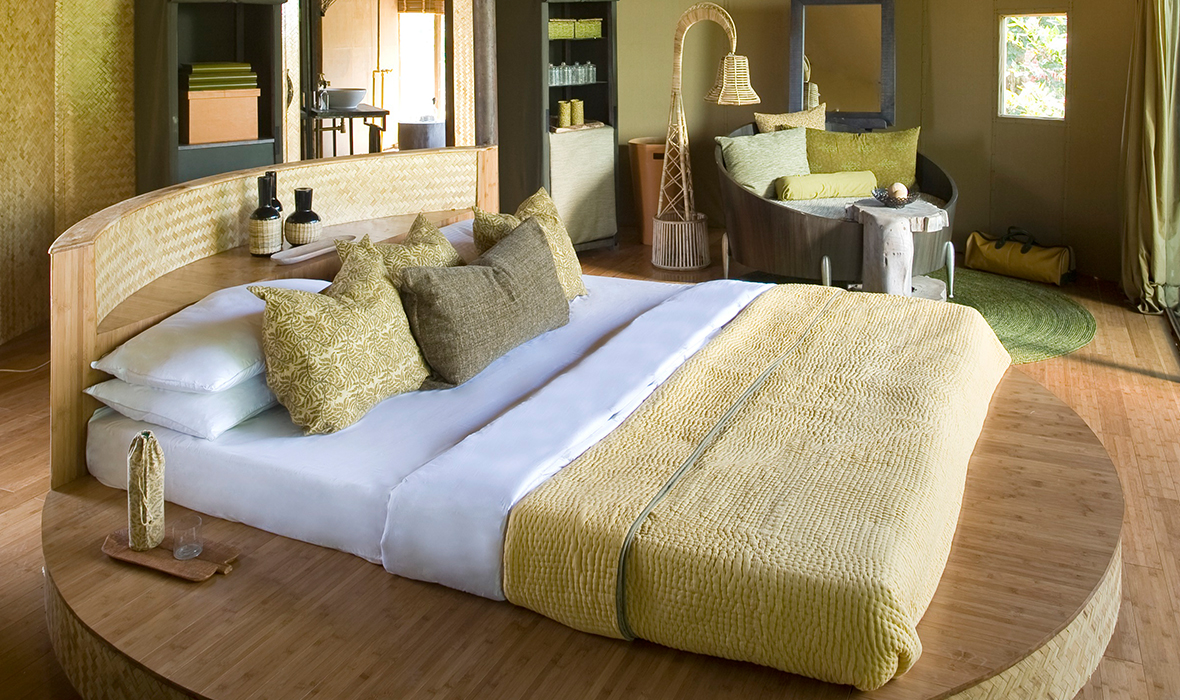
ABOVE: Tented suites
Tented suites feature glass doors that lead out to a floating verandah, swimming pool, dining decks, and a tranquil river backdrop.
Guests can sample tribal flavors and local delicacies of pav bhaji, raj kachori, and kathi rolls. Dinner includes chicken roasted in clay or a ‘thali’ bush dinner set in the midst of the sal forest, lit by hundreds of lanterns and accompanied by traditional dancing and singing.
Chasing the Sun
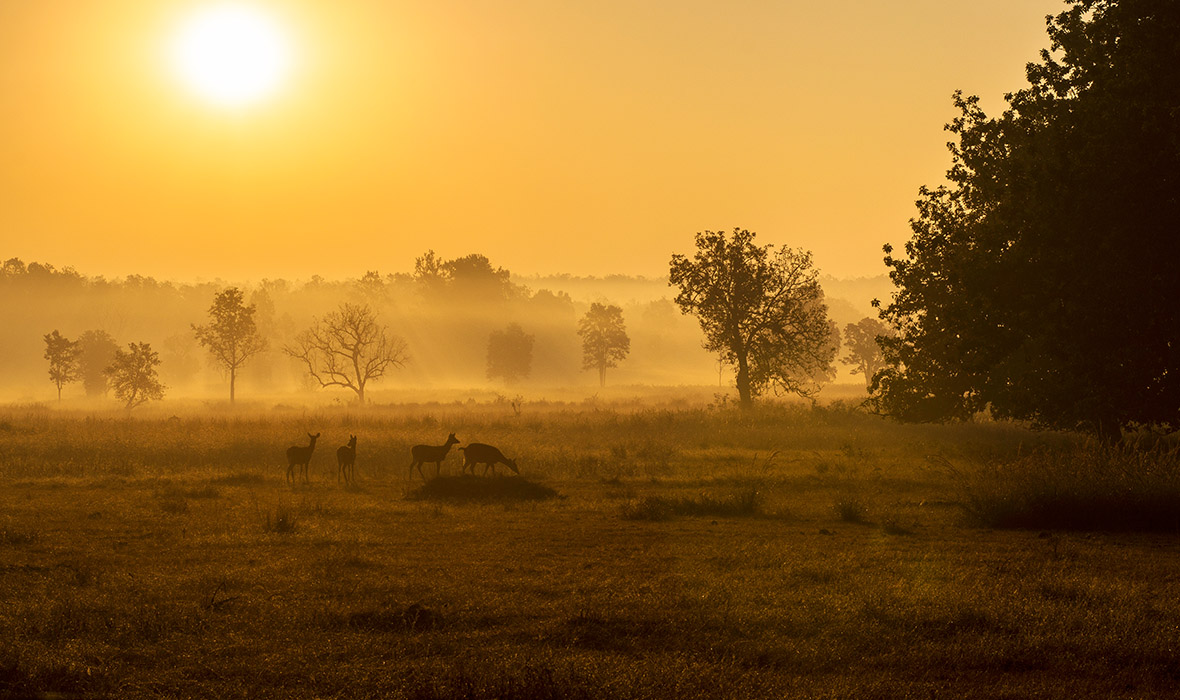
ABOVE: Swamp deer at sunrise in Kanha.
Throughout the forest, through trees and over meadows, travelers can hunt down that perfect shot of wildlife with the sunrise and sunset. All over Kanha, the early morning mist makes for brilliant, ephemeral photography. Those waiting for the perfect shot of swamp deer will find the mornings unbeatable.
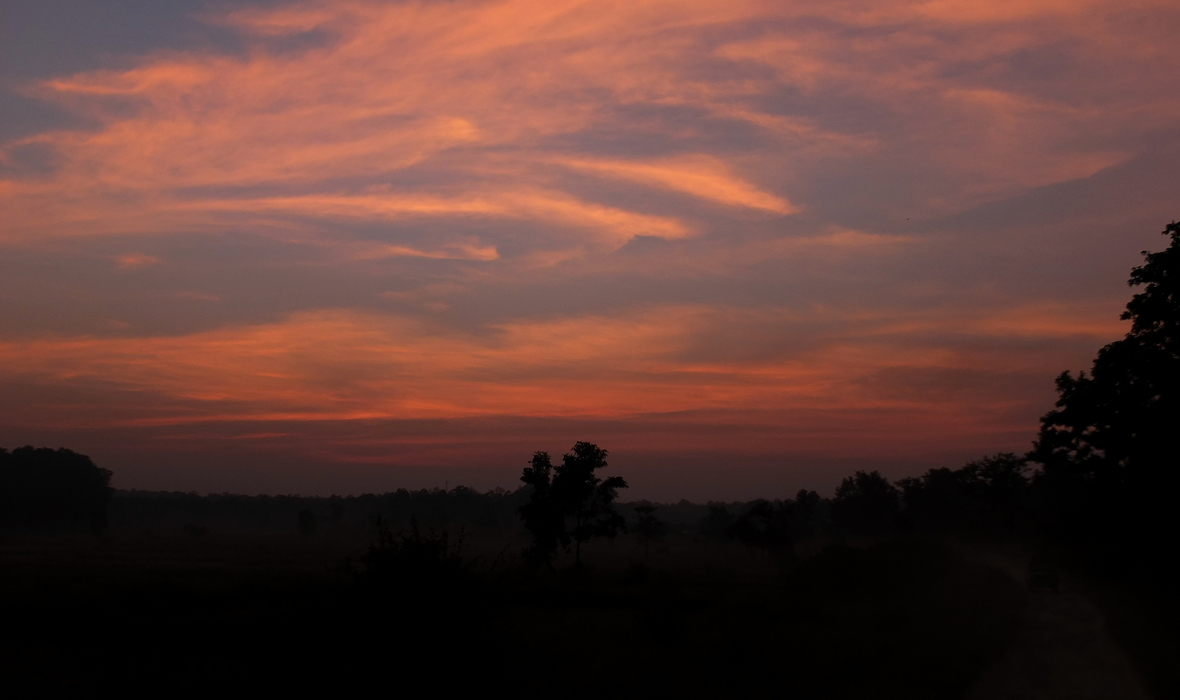
ABOVE: Sunset in Kanha National Park
The highest point in Kanha National Park, Bamni Dadar, popularly known as Sunset Point, offer travelers panoramic views of the park as well as occasional grazing deer and gaur. Renowned for its scenic beauty, Bamni Dadar is a traveler’s best chance to complete their catalog of spotting flora and fauna the park – and sunset isn’t bad either. However, much of this area has been closed to tourists since 2016, so travelers would be wise to check with a tour operator before putting this spot on their itineraries.

